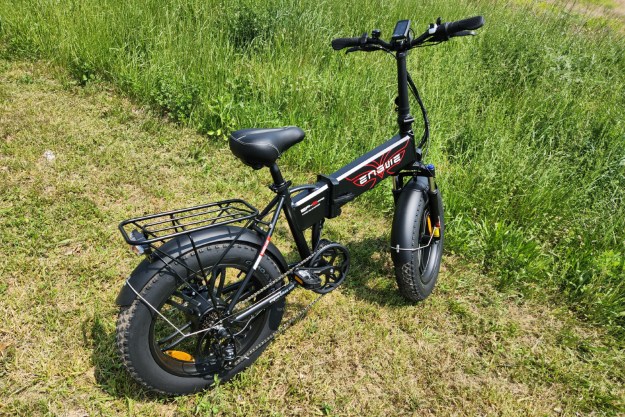
Goggle technology has rapidly evolved in recent years but nothing has been quite as much of a game changer as the introduction of the electrochromic lens. Unlike its photochromic predecessors — which detect changes in light and adapt automatically — electronic technology gives you complete control, allowing you to change the tint of your goggle with the easy press of a button. If it’s sunny outside, keep it on the darkest setting and when the cloud rolls in, simply push a button to pierce through the flat light and brighten everything up.
While both goggles feature comparable cylindrical designs, the design of each battery represents a true distinguishing factor.
In January, Spy launched the Ace EC at the Outdoor Retailer and Snow Show in January, garnering a handful of awards along with an enthusiastic reception. The new goggle, which hits shelves in September of 2018, is similar to Uvex’s Snowstrike Variotronic (VT) that’s been on the market for several years. However, the new Ace stands apart in several unique ways. The biggest and most obvious differentiator is its price. Spy’s version will retail for $275 whereas the Uvex model sells for roughly $470.
To get a true sense of how they stack up against each other, we put the Ace and Snowtrike head-to-head in terms of specs, technology, and design.
Lens technology
Let’s start with Spy’s Ace. Featuring an invisible filament sandwiched between an injected cylindrical dual lens, a simple press of a button activates an electronic pulse that changes the lens’s tint. This allows you to easily swap between three opacity settings — dark, medium, and light persimmon. The Snowstrike, by contrast, uses variotronic technology that activates an LCD (liquid crystal display) laminate when you push the button, letting you shift between dark violet, neutral blue, and bright red.

Both offer three tint settings with similar colors; however, the Snowstrike switches tints much quicker. Each transition takes less than 0.1 seconds whereas the Ace might take roughly four to eight seconds. The Snowstrike also features an automatic mode with an integrated light sensor that can detect ambient light and adjust accordingly. That means if your battery is running low or you’re riding hard and can’t be bothered to switch the button, it still shifts tints to adapt.
Another distinction is that you can wear the Uvex goggle as a completely clear lens. The Ace, on the other hand, can only be worn in one of its three tints — which is a win for the Snowstrike. It’s worth pointing out that the Ace does brighten to 17 percent clarity, meaning that unless you ride at night a lot, this won’t make much of a difference.
Goggle design
While both goggles feature comparable cylindrical designs, it’s the design of each battery that represents a true distinguishing factor. Each battery pack attaches to the strap in similar fashions but the Ace lasts for approximately 150 three-shift cycles while the Snowstrike can operate for roughly 30 hours. Although it’s difficult to predict exactly how many hours you’d get out of 150 shift cycles, it’s hard to imagine it reaching 30 hours.
A winning feature of Spy’s battery, however, is that it creates a buzzing sound when transitioning to signal to you it’s shifting. This is surprisingly helpful when you’re outside in the elements and want to know right away whether it’s working or not.
Additional features
In terms of anti-fogging qualities, the goggles are essentially the same in this regard, with neither doing enough to separate itself from the other. Specifically, Spy uses its proprietary Scoop and RISE ventilation to increase airflow and reduce fog-causing sweat and moisture.
Spy uses its proprietary Scoop and RISE ventilation to increase airflow and reduce fog-causing sweat, Uvex uses its patented Supravision anti-fog coating and direct frame ventilation via an upper foam layer.
Conversely, Uvex uses its patented Supravision anti-fog coating that delivers 60 seconds of protection which, combined with direct frame ventilation via an upper foam layer, keeps the lens crisp and clear. All told, both are excellent systems and should provide hours of fog-free riding time, no matter the conditions.
Availability
The Snowstrike is already on the market and the Ace EC is set to launch in September of 2018. Actually getting a pair of Uvex’s Snowstrike is a bit tricky, however, considering it’s a German brand and that it’s not terribly easy to find in the United States — typically, they must be ordered online.
Spy, in contrast, is based in Southern California. The Ace plans to be widely available at brick and mortar and online retailers throughout the U.S.


